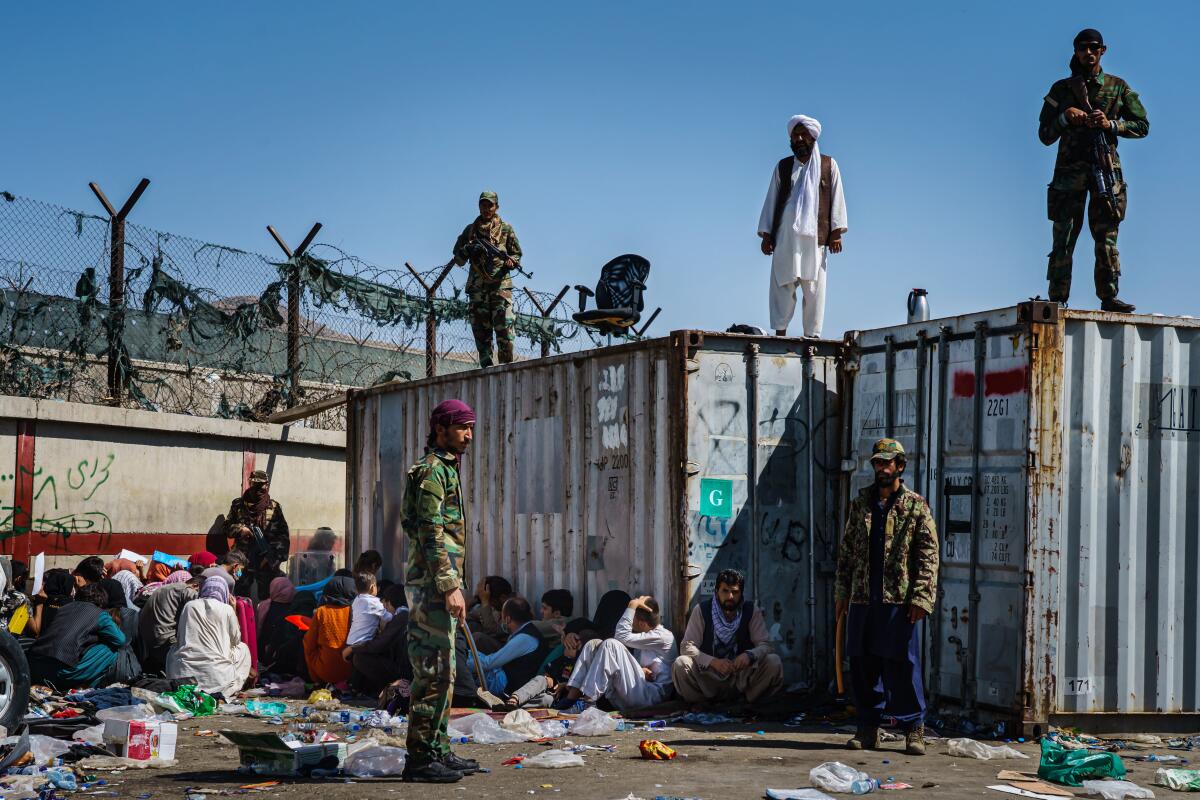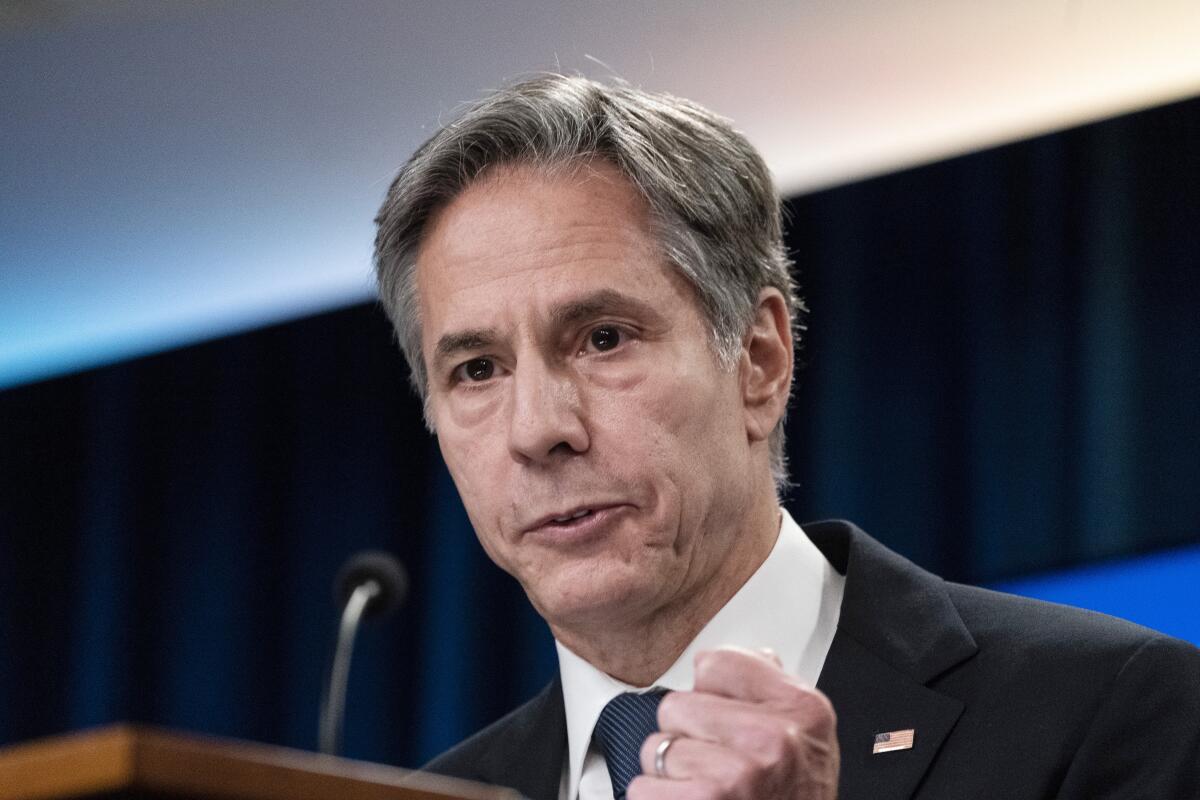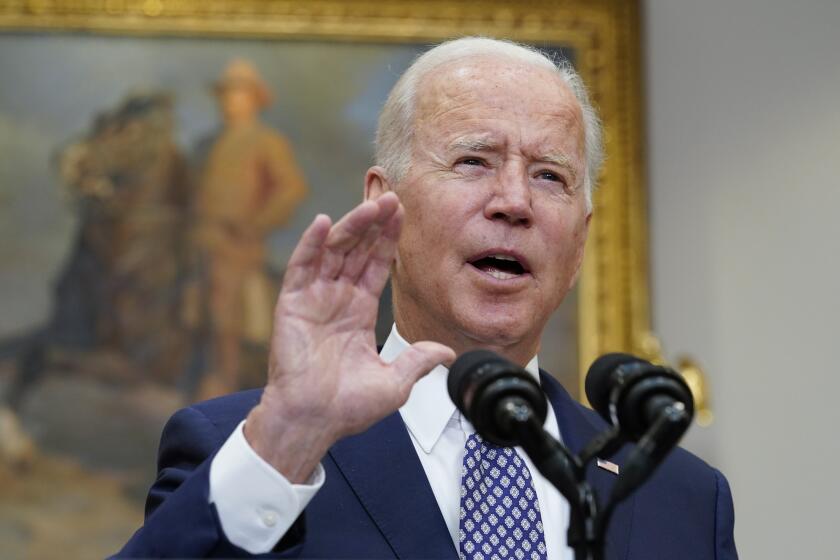As evacuations continue in Afghanistan, up to 1,500 Americans remain

WASHINGTON — With despair growing over who will be left behind in Afghanistan, Secretary of State Antony J. Blinken on Wednesday promised that all American citizens who want to leave will be able to do so, even after next Tuesday’s deadline for withdrawal of Western troops from the country.
Blinken also vowed to use “every available tool” to eventually rescue vulnerable Afghans whose lives under Taliban rule would be especially perilous but whose transport from the country is vastly more complicated, particularly those who worked with the U.S. over the last two decades.
“Let me be crystal clear about this: There is no deadline on our work to help any remaining American citizens who decide they want to leave to do so,” he said. “That effort will continue every day past Aug. 31.”
Blinken made an identical assurance to “the many Afghans who have stood by us over these many years, want to leave and have not been able.”
That rang hollow, though, for thousands of Afghans desperate to leave and swamping the airport in Kabul. Also left behind so far are several hundred core staff members from the U.S. Embassy in Kabul and related State Department programs who say they were not summoned to the early evacuations that cleared the embassy of its U.S. citizen personnel and who now feel abandoned.
After days in which administration officials could not, or would not, provide the numbers of U.S. citizens in Afghanistan, Blinken offered some estimations.
Of an estimated 6,000 U.S. citizens in Afghanistan at the time it fell to the Taliban, about 4,500 have been evacuated, Blinken said. Of those remaining, 500 have been contacted and given instructions on how to make the torturous entrance into the Kabul airport.
Biden aims to stick to Afghanistan withdrawal deadline as evacuations continue, but asks Pentagon for contingency plans. Taliban warns against extension.
The remaining 1,000 have not been found — for many reasons, Blinken said, though attempts are still being made through multiple channels, including 45,000 phone calls, 20,000 emails, plus text messaging. U.S. citizens who travel to Afghanistan, or anywhere overseas, are not required to register at the U.S. Embassy when they arrive, nor to de-register when they leave, making numbers somewhat fluid.
“Some may no longer be in the country,” Blinken said. “Some may have claimed to be Americans but turn out not to be. Some may choose to stay. We’ll continue to try to identify the status and plans of these people in the coming days.”

Blinken also noted that, in what came to be the waning weeks of the U.S.-backed Afghan government, the State Department sent 19 messages advising, then urging American citizens to leave Afghanistan. It is unclear how many heeded the advice, but the Taliban takeover unfolded far more rapidly than U.S. officials or others expected, finishing essentially in 11 days and putting an end to the 20-year U.S.-led war.
The U.S. has evacuated well over 80,000 people from Kabul since Aug. 14, the Pentagon said. The U.S. military and its NATO allies ramped up the pace of the evacuation in the last few days as bottlenecks eased and time ran out. Maj. Gen. William Taylor, a senior operational director for the Army, said early Wednesday that about 10,000 people were at the Kabul airport awaiting flights.
Taylor also described an operation under cover of darkness late Tuesday or early Wednesday in which U.S. special forces emerged by helicopter from the Kabul airport to rescue about 20 people elsewhere in the city. He gave no further details. It was one of several rescue missions U.S. forces have conducted despite an ostensible agreement with the Taliban, which surrounds the airport, not to cross its lines.
Two members of Congress who flew to Kabul secretly Tuesday said upon their return that they doubted the U.S. would be able to finish evacuations by President Biden’s deadline.
“We came into this visit wanting, like most veterans, to push the president to extend the August 31st deadline,” Reps. Seth Moulton (D-Mass.) and Peter Meijer (R-Mich.), both military veterans, said in a statement. “After talking with commanders on the ground and seeing the situation firsthand, it is obvious that because we started the evacuation so late, no matter what we do, we won’t get everyone out on time.”
But the men, who said they “had a duty to provide oversight on the executive branch,” faced anger from colleagues in Congress, the White House and the military over resources diverted to protect them.
The U.S. Embassy, which is operating on a makeshift basis out of the Kabul airport, late Wednesday issued a strongly worded caution, telling Americans near the airport or outside its gates to leave immediately, and others to avoid traveling to the airport. The warning came amid growing alarm over a possible terrorist attack on crowds amassed around the airport.
Administration officials have been raising the alarm over a possible attack by an Islamic State affiliate that has been operating in Afghanistan. The relatively new group known as ISIS-K, or Islamic State in Khorasan, is a bitter rival of the Taliban and is said to have been responsible for some of the most recent attacks in Afghanistan, including the deadly bombing of a girls’ school in Kabul. Biden on Tuesday referred to growing risks from the group.
Biden has insisted on sticking to the Tuesday deadline for concluding the withdrawal despite entreaties from European and North Atlantic Treaty Organization allies such as Britain, Germany and France. But he also left room open for “contingency plans.”
The withdrawal was cemented by a 2020 deal negotiated by former President Trump directly with the Taliban, sidelining the Afghan government.
The Taliban leadership insists the deadline must be obeyed but says some Afghans will be allowed to leave the country afterward. However, the extremist group has little credibility among most Afghans and world leaders. It has tried to portray itself as more moderate than during its brutal rule before the U.S. invasion in 2001, but there are reports of violence and repression of women during its recent march across the country.
Exactly how Americans or Afghans can leave the country after the U.S. is gone, and when there will be no one to operate the airport, remained unclear. The United States often works with hostile governments to facilitate the departure of Americans, but there is usually a third-party mediating state, as Switzerland acts between Iran and the U.S. It remains unclear how the airport will be operated.
White House Press Secretary Jen Psaki said the U.S. intended to set up some form of consular services for Afghans who would want to leave Afghanistan after the end of the month.
“This effort does not end Aug. 31,” Blinken said.
More to Read
Get the L.A. Times Politics newsletter
Deeply reported insights into legislation, politics and policy from Sacramento, Washington and beyond. In your inbox three times per week.
You may occasionally receive promotional content from the Los Angeles Times.












